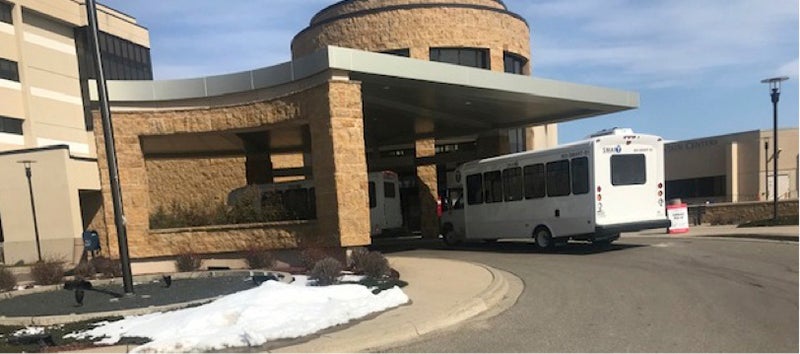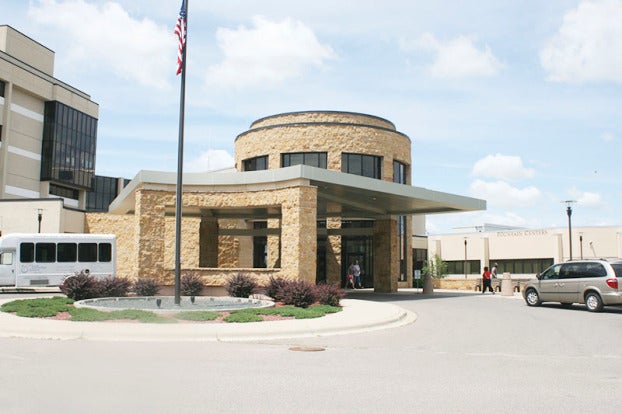COVID-19 update: Almost half of Minnesota adults vaccinated; more than 11,000 in Freeborn County with at least one shot
Published 11:25 am Monday, April 12, 2021
|
Getting your Trinity Audio player ready...
|
Monday starts with hope and concern on the COVID-19 front. Minnesota is close to having half the adult population with at least one vaccine shot. The state is also approaching 7,000 deaths tied to the pandemic. Both thresholds may be crossed this week.
Vaccinations, cases ICU needs push higher
About 32.2 percent of Minnesota adults are completely vaccinated; 47.3 percent have received at least one vaccine dose, including about 84 percent of residents age 65 and older, the state Health Department said Monday.
But as vaccination numbers increase, COVID-19 case counts continue to rise, too.
The number of known, active cases has been trending upward over the past few weeks, with nearly 19,000 as of Monday’s report — marking more than three weeks with active daily counts above 10,000.
Hospitalizations have climbed significantly in the past few weeks to levels not seen since January, and deaths tied to the disease are trending up, too. Health officials say coronavirus variants circulating in Minnesota are driving those increases.
The state on Monday reported 651 people in Minnesota hospitals with COVID-19; 161 needed intensive care — the highest number of ICU patients since the first days of January.
While still low compared to late November and early December, the rising trend is notable given the worries over the rise of the highly contagious U.K. COVID-19 variant, which state health officials suspect is driving the current upswing.
As of Thursday the state had confirmed about 1,600 cases of the U.K. strain. State epidemiologist Dr. Ruth Lynfield said it’s linked to five deaths here and likely responsible for the majority of the spread happening now.
Minnesota Health Commissioner Jan Malcolm said recently that while the increase in cases is concerning, the growing number of vaccinated people in Minnesota means the state likely won’t see as steep a surge in cases of the scope seen in November and December.
Two deaths reported on Monday raised Minnesota’s overall pandemic death toll to 6,959. Among those who’ve died, about 62 percent had been living in long-term care or assisted living facilities; most had underlying health problems.
The state has recorded 544,046 total confirmed or probable cases so far in the pandemic, including 1,994 posted Monday. About 95 percent of Minnesotans known to be infected with COVID-19 in the pandemic have recovered to the point where they no longer need to be isolated.
Regional hot spots bubble
Regionally, all parts of Minnesota are in better shape than they were in late November and early December. The latest numbers, however, show cases creeping up across the state.
Public health leaders continue to keep watch on clusters popping up over in recent weeks in the southwest Twin Cities metro area as well as Mankato in southern Minnesota, in central Minnesota and around Aurora and Ely in the northeast.
Cases spread across age groups
People in their 20s still make up the age bracket with the state’s largest number of confirmed cases — more than 101,000 since the pandemic began, including more than 52,000 among those ages 20 to 24.
The number of high school-age youth confirmed with the disease has also grown, with more than 43,000 total cases among those ages 15 to 19 since the pandemic began.
With kids increasingly returning to school buildings and sports, Minnesota public health officials are urging Minnesota families with children to get tested every two weeks for COVID-19 until the end of the school year.
Although young people are less likely to feel the worst effects of the disease and end up hospitalized, experts worry they will spread it unknowingly to older relatives and members of other vulnerable populations. Those with the coronavirus can spread it when they don’t have symptoms.
Caseloads among people of color
In Minnesota and across the country, COVID-19 has hit communities of color disproportionately hard in both cases and deaths. That’s been especially true for Minnesotans of Hispanic descent for much of the pandemic.
Even as new case counts continue to track well below their late November, early December peaks, the data shows Latino people continue to be hit hard.
Distrust of the government, together with deeply rooted health and economic disparities, have hampered efforts to boost testing among communities of color, officials say, especially among unauthorized immigrants who fear their personal information may be used to deport them.
Officials have acknowledged that distrust by communities of color has been a problem during the pandemic. They’ve offered up some data on vaccinations broken down by race and ethnicity that they’re updating regularly.
South-central Minnesota update
Freeborn County reported 16 new COVID-19 cases on Monday and has now had had 3,217 people who have had COVID-19 since the start of the pandemic.
There are now 105 active cases.
The new cases included two people between 0 and 4, one person between 5 and 9, two people between 15 and 19, three people in their 20s, three people in their 30s, one person in their 40s, two people in their 50s and two people in their 60s.
As of Saturday, 11,392 people in Freeborn County have received at least one dose of the COVID-19 vaccine, and 7,493 people have received the completed series.
The following is an update on other area counties:
- Faribault County: one new lab-confirmed case; 1,418 total cases; 5,076 people had received at least one dose of the vaccine and 3,563 had received the completed series.
- Mower County: 12 new lab-confirmed cases; 4,477 total cases; 15,878 people had received at least one dose of the vaccine and 10,212 had received the completed series.
- Steele County: seven new lab-confirmed cases, one probable case; 3,497 total cases; 12,688 people had received at least one dose of the vaccine and 8,222 had received the completed series.
- Waseca County: 10 new lab-confirmed cases; 2,278 total cases; 6,419 people had received at least one dose of the vaccine and 4,358 had received the completed series.





